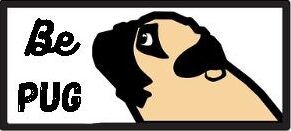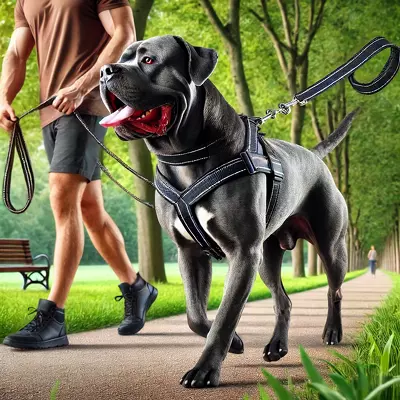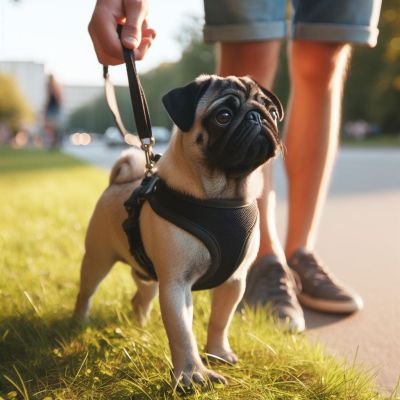The Ultimate Guide to No-Pull Harnesses: Mastering the Art of Peaceful Walks with Your Dog

Training dogs to walk nicely on a leash can often be a challenging endeavor for pet owners. A no-pull harness is designed to help address this issue, providing a solution that discourages pulling without causing discomfort or harm to the dog. By redistributing pressure across the dog’s chest and back when they attempt to pull, these harnesses encourage better leash manners while ensuring a comfortable walk for both the pet and the owner.
I. Introduction
Walking a dog should be an enjoyable experience, but when a dog pulls on the leash, it can become frustrating and even dangerous. A solution to this common problem is the no-pull harness, a tool designed to help control pulling and improve leash walking.
II. Understanding No-Pull Harnesses
A. Definition and Purpose
A no-pull harness is a type of dog harness that prevents pulling by redistributing the force when a dog tries to pull. Unlike traditional collars or harnesses that apply pressure on the dog’s neck or back, no-pull harnesses apply gentle pressure across the dog’s chest or shoulders, discouraging them from pulling without causing pain or injury.
B. How No-Pull Harnesses Work
These harnesses typically feature a front-clip design, where the leash attaches to a clip on the chest or a dual-clip system with attachment points on both the chest and the back. When the dog pulls, the harness design steers it back toward the owner, reducing the pulling behavior over time.
C. Benefits of Using a No-Pull Harness
Using a no-pull harness offers several advantages, including reduced risk of injury to the dog’s neck and spine, improved control during walks, and a more enjoyable walking experience. They are especially beneficial for strong dogs or those with respiratory issues, where pulling on a traditional collar could be harmful.
III. Types of No-Pull Harnesses
A. Front-Clip Harnesses
Front-clip harnesses have the leash attachment point on the chest, which provides the owner with more control by steering the dog to the side and redirecting its attention back to the owner when it pulls.
B. Dual-Clip Harnesses
Dual-clip harnesses offer the versatility of having two attachment points: one on the back for normal walking and one on the chest for training or when more control is needed.
C. Tightening or Control Harnesses
These harnesses gently tighten around the chest or shoulders when the dog pulls. This is designed to discourage pulling through a slight pressure, but it should be comfortable and not restrict the dog’s movement or breathing.
IV. Selecting the Right No-Pull Harness
A. Factors to Consider
- Size and Fit
Getting the right size and fit is crucial for the harness to be effective and comfortable. A poorly fitting harness can cause discomfort or even allow the dog to slip out. - Material and Comfort
Look for durable materials that can withstand pulling and are comfortable for the dog to wear for extended periods. Padding is important to prevent rubbing and irritation. - Dog Breed and Behavior
Consider your dog’s specific breed, size, and behavior. Some harnesses are better suited for large or strong breeds, while others are designed for smaller dogs.
B. Tips for Fitting a No-Pull Harness
Ensure the harness is snug but not too tight, with room for two fingers between it and the dog’s body. Adjust the straps according to the manufacturer’s instructions to achieve a secure fit.
V. Training Your Dog with a No-Pull Harness
A. Introducing the Harness to Your Dog
Introduce the harness to your dog gradually, allowing them to sniff and wear it around the house before attaching the leash. This helps them get used to the feel of the harness without the pressure of walking.
B. Positive Reinforcement Techniques
Use treats and praise to encourage your dog when they walk nicely with the harness. Positive reinforcement helps them associate the harness with positive experiences, making training more effective.
C. Common Challenges and Solutions
Some dogs may initially resist wearing a harness or continue to pull despite the harness. Consistency, patience, and positive reinforcement are key to overcoming these challenges. If difficulties persist, consider seeking the advice of a professional dog trainer.
In conclusion, a no-pull harness can be a valuable tool for improving leash walking, making walks more enjoyable for both dogs and their owners. By understanding the different types of harnesses and selecting the right one for your dog, you can effectively train your dog to walk nicely on a leash. With patience and positive reinforcement, most dogs can learn to walk well with a no-pull harness, enhancing the walking experience for everyone involved.
VI. FAQs
Q: How do I know if a no-pull harness is working for my dog?
A: If your dog starts to walk with less pulling and seems more responsive to your guidance, it means the no-pull harness is effective. Look for signs of improved walking behavior and less strain on the leash.
Q: Can a no-pull harness be used on puppies?
A: Yes, no-pull harnesses can be used on puppies. It’s a great way to teach them good leash manners from a young age. Ensure the harness is appropriately sized for your puppy, and adjust the fit as they grow.
Q: How often should I check the fit of my dog’s no-pull harness?
A: Check the fit of the no-pull harness regularly, especially if your dog is still growing or has changes in weight. A monthly check is a good practice to ensure the harness remains comfortable and effective.
Q: Are no-pull harnesses suitable for all dog breeds?
A: No-pull harnesses are suitable for most dog breeds, but the choice of harness should consider the specific breed’s size, strength, and behavioral tendencies. Certain designs work better for specific breeds.
Q: Can no-pull harnesses be worn all day?
A: It’s not recommended for dogs to wear no-pull harnesses all day. The harness should be used for walks and training sessions to prevent potential discomfort or irritation from prolonged wear.
Q: Can pugs fly on planes?
A: Yes, pugs can fly on planes, but due to their brachycephalic (short-nosed) nature, extra precautions should be taken. Many airlines have specific regulations for brachycephalic breeds, so it’s important to check with the airline before traveling.
Q: Can pugs be service dogs?
A: Yes, pugs can be service dogs. While they are not the most common breed for service work, their friendly and attentive nature can make them suitable for certain types of service roles, such as emotional support animals.
VII. Conclusion
A. The Importance of Patience and Consistency
Implementing a no-pull harness into your dog’s routine marks the beginning of a new chapter in your walking experiences together. However, the key to truly unlocking the benefits of this tool lies in patience and consistency. Dogs learn through repetition, and the transition to a no-pull harness may take time. Maintaining a consistent approach, using positive reinforcement, and ensuring every walk reinforces the desired behavior are crucial steps. Over time, your dog will associate the harness with positive, enjoyable walks, reducing their inclination to pull and making your outings more pleasant.
B. When to Seek Professional Help
While a no-pull harness is a powerful tool for improving leash manners, some dogs may require additional assistance. If you find that despite your best efforts, your dog continues to pull excessively, or if the harness is not improving walking behaviors, it may be time to seek professional help. Dog trainers and animal behaviorists can offer personalized guidance and training strategies tailored to your dog’s needs. They can also assess whether there are underlying behavioral issues contributing to the pulling. Seeking professional advice can ensure that both you and your dog enjoy walks to their fullest potential.
VIII. Suggested Readings
To further enhance your understanding of no-pull harnesses and dog training, consider exploring these books:
- “The Other End of the Leash” by Patricia McConnell – A renowned animal behaviorist, offers insights into the effective communication between humans and dogs, emphasizing positive reinforcement training methods.
- “No Pull Harness Solutions” by Jane Simmons – This book provides a comprehensive guide to choosing, fitting, and training your dog with a no-pull harness, including tips for addressing common walking issues.
- “101 Dog Tricks” by Kyra Sundance – While not specifically about no-pull harnesses, this book includes a variety of training exercises that can improve your dog’s behavior and responsiveness on walks.
These readings offer valuable perspectives on dog training and behavior management, providing both novice and experienced dog owners with the knowledge to create a more harmonious relationship with their pets.





